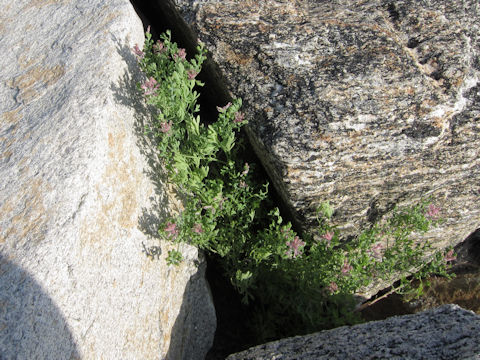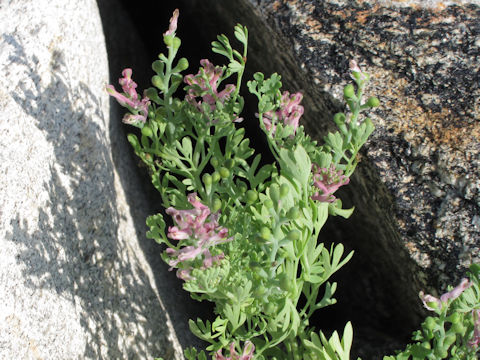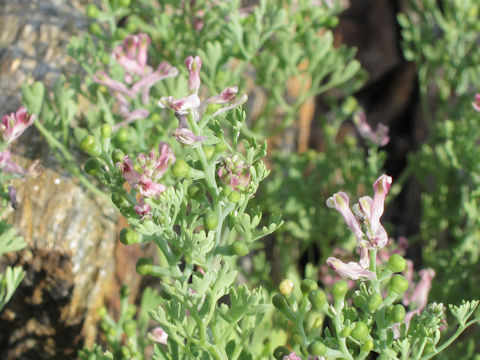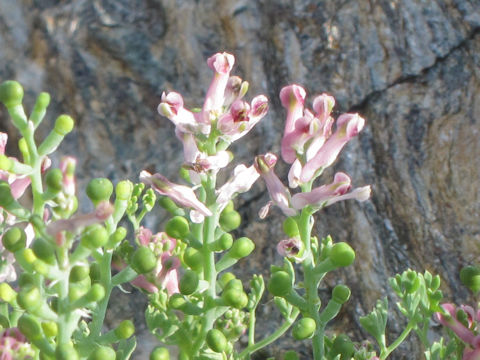
|
The Common fumitory (Fumaria officinalis) belongs to Papaveraceae (the Poppy family). It is an annual or a biennial herb that is native to central and southern Europe. It is now widely naturalized in temperate zones throughout the world. In Japan, it was discovered in Hokkaido in 1969. It grows in wastelands and cultivated land, and is 20 to 40 cm tall. The stem is thick and ridged, and often branched. The leaves are three times pinnately compound with narrowly lanceolate to linear lobes that are further divided. From spring to summer, racemes are produced at the ends of the branches, and the flowers are light red to red-purple in color. There are four petals, which connate with each other to form a tubular shape. The fruit is a rather flattened spherical nut. The above-ground part contains the alkaloid protopine, which has long been used in traditional European medicine.
|



